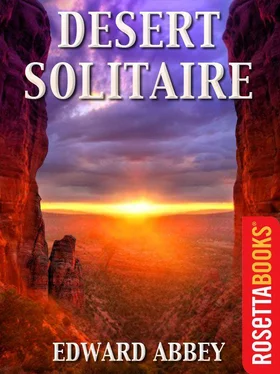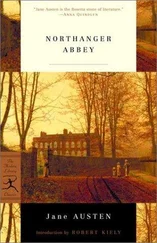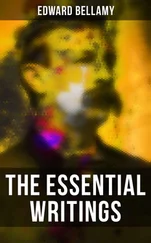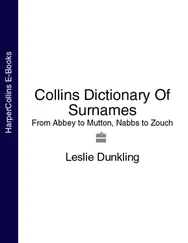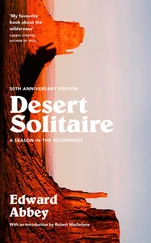Abbey, Edward - Desert Solitaire (Edward Abbey Series )
Здесь есть возможность читать онлайн «Abbey, Edward - Desert Solitaire (Edward Abbey Series )» — ознакомительный отрывок электронной книги совершенно бесплатно, а после прочтения отрывка купить полную версию. В некоторых случаях можно слушать аудио, скачать через торрент в формате fb2 и присутствует краткое содержание. Год выпуска: 2011, Издательство: RosettaBooks, Жанр: Старинная литература, на английском языке. Описание произведения, (предисловие) а так же отзывы посетителей доступны на портале библиотеки ЛибКат.
- Название:Desert Solitaire (Edward Abbey Series )
- Автор:
- Издательство:RosettaBooks
- Жанр:
- Год:2011
- ISBN:нет данных
- Рейтинг книги:4 / 5. Голосов: 1
-
Избранное:Добавить в избранное
- Отзывы:
-
Ваша оценка:
- 80
- 1
- 2
- 3
- 4
- 5
Desert Solitaire (Edward Abbey Series ): краткое содержание, описание и аннотация
Предлагаем к чтению аннотацию, описание, краткое содержание или предисловие (зависит от того, что написал сам автор книги «Desert Solitaire (Edward Abbey Series )»). Если вы не нашли необходимую информацию о книге — напишите в комментариях, мы постараемся отыскать её.
Desert Solitaire (Edward Abbey Series ) — читать онлайн ознакомительный отрывок
Ниже представлен текст книги, разбитый по страницам. Система сохранения места последней прочитанной страницы, позволяет с удобством читать онлайн бесплатно книгу «Desert Solitaire (Edward Abbey Series )», без необходимости каждый раз заново искать на чём Вы остановились. Поставьте закладку, и сможете в любой момент перейти на страницу, на которой закончили чтение.
Интервал:
Закладка:
Endless, too, I’m beginning to feel, before I see at long last the glimmer of coals ahead, the embers of a fire, and in the dimness the Outline of the rubber boats, a comforting sight. Ralph is sleeping when I stumble into camp but wakes up easily to show me the mess of catfish he has caught, cleaned and saved for me, wrapped in wet leaves, still cool and fresh.
It’s surely after midnight but who wants to sleep? We rebuild the fire and deep-fry the fish in part of the bacon grease which Ralph has wisely been hoarding all along. I pull off my mud-caked boots, twice their original weight, sit close to the fire and eat a tremendous supper, while Newcomb fills the air with huge clouds of fragrant, philosophical pipe smoke. We discuss the day’s adventures.
High above our heads the owl hoots under the lost moon. A predawn wind comes sifting and sighing through the cottonwood trees; the sound of their dry, papery leaves is like the murmur of distant water, or like the whispering of ghosts in an ancient, sacrosanct, condemned cathedral.
Late in the morning, close to noon, the sun comes glowering over the wall in a burst of fire and we are driven out of our sacks. Into the green lagoon for a bath and a swim and then Ralph baits a hook with the reliable rotten salami, I build a campfire in the shade and fill the skillet with grease, and once again we dine on channel cat—delicious fish!
After this combined breakfast and dinner we retire to the water again and deeper shade, evading the worst of the midday heat. Naked as savages, we float on our backs in the still water, squat on the cool sand under the sheltering cottonwood and smoke like sachems. We may not have brought enough food but at least we’ve got plenty of Bull Durham.
“Newcomb,” I explain, “we’ve got to go back.”
“But why?” he says. “Why?”
“Why do you grow that beard?”
“Why not?”
“Well why?”
“Well why not?”
“Well goddamnit why?”
“Well goddamnit why not?”
“Because,” I explain. The role of the Explainer has become a well-established one in recent times. “Because they need us. Because civilization needs us.”
“What civilization?” he says.
“You said it. That’s why they need us.”
“But do we need them?”
“Well,” I say, “how long do you think that jar of bacon grease will last?”
That made him think. “Let’s go,” he says.
Sometime in the middle of the afternoon we shove our fragile boats once more into the water, climb aboard and paddle slowly out of the Escalante’s womb, back to the greater world of Glen Canyon and the steady, powerful, unhurried, insouciant Colorado. It is almost like a coming home.
For the rest of the afternoon, keeping to the shady side, we drift down the splendid river, deeper and deeper and deeper into the fantastic. The sandstone walls rise higher than ever before, a thousand, two thousand feet above the water, rounding off on top as half-domes and capitals, golden and glowing in the sunlight, a deep radiant red in the shade.
Beyond those mighty forms we catch occasional glimpses of eroded remnants—tapering spires, balanced rocks on pillars, mushroom rocks, rocks shaped like hamburgers, rocks like piles of melted pies, arches, bridges, potholes, grottoes, all the infinite variety of hill and hole and hollow to which sandstone lends itself, given the necessary conditions and, as Thoreau says, a liberal allowance of time—let us say, about five thousand years? Fifty thousand? Five hundred thousand? Choose whatever sum you like.
We pass beneath hanging canyons, the mouths of lateral drainages which terminate above the level of the Colorado; out of these when it storms come roaring falls of thick, muddy water, of logs, trees, cows and thundering boulders, all crashing into the river hundreds of feet below, a gorgeous spectacle which we will not have the good fortune to witness.
Now and then we are offered tantalizing views, far ahead, of the blue dome of Navajo Mountain, another laccolith, a holy place, home of gods, navel of the world in the eyes of the Indians, and the shiplike prow of the high Kaiparowits Plateau.
Not all is rock: we see a redtailed hawk skimming along the cliff, once a golden eagle, and vultures soar in the distance. Closer by we hear though seldom see the wrens, finches and yellow warblers, and a few long-legged water birds.
Heart of the whole and essence of the scene is the river, the flowing river with its thin fringe of green, the vital element in what would be otherwise a glamorous but moon-dead landscape. The living river and the living river alone gives coherence and significance and therefore beauty to the canyon world. “I love all things which flow,” said the deepest of Irishmen.
At evening we come to historic Hole in the Rock. Here we float ashore and camp for the night.
What happened here? In the year 1880, eleven years after Powell had passed this way, the Church of Jesus Christ of the Latter-Day Saints commissioned a group of the faithful, living then in south-central Utah, to establish a new settlement in the southeast corner of the state near what is now the village of Bluff.
As obedient as they were courageous, some two hundred and fifty Mormons—men, women and children, with livestock and twenty-six wagons—started east from Panguitch toward the designated place. They followed no road or trail but simply what would have seemed, on a map, to be the shortest line between the two points.
After traversing seventy miles of desert they came to the rim, the jump-off. Two thousand feet below, the Colorado River rolled across their chosen route. Instead of giving up and turning back they hammered and blasted a notch (the Hole in the Rock) down through the rim into the nearest side canyon. From there they carved and constructed a crude wagon road to the edge of the water and descended. In places the wagons had to be lowered on ropes. After fording the river these undaunted people climbed the farther side over terrain almost as difficult and continued on, week after week, through the surreal sandstone wilderness and forests of pinyon and juniper until they reached their goal. The entire expedition required about four months; the trail which they pioneered was never used a second time.
In the morning I decide to climb the old trail, up through the notch to the top of the plateau—haven’t seen the outer world for a long time now. While Ralph goes fishing I start off through the willow jungle, around tangles of poison ivy and up enormous sand dunes toward the Hole. A brook trickles down the gulch below the path, a thread of water creeping from pool to pool. At the final opportunity—Last Chance Puddle—I take a hearty drink. I’ve left my canteen behind at the boats; Hole in the Rock, clearly visible from the river, doesn’t seem far away.
The old trail climbs away from the water, switchbacking up the talus slope on the northern side of the canyon. The pitch is steep, the morning sun is blazing on my back, and the heat quickly becomes unpleasant. My sweat dries as fast as it forms—the parched air is sucking at my pores. My belly is full of water, gurgling like a wineskin, but I can almost feel it being drawn away; the knowledge that I’ve brought no canteen along adds poignancy to my premature thirst. I put a pebble in my mouth and keep climbing.
Above the talus I find the dugway, broad and shallow steps chipped out of the canyon wall by the first and only road-builders here, and the remains of fill and foundation—slabs and blocks of sandstone laid in place, one by one, over eighty years before. The canyon begins to narrow and pucker near the summit and the cleft is jammed with boulders big as boxcars. I squeeze among them, following the tracks of former hikers. Here at least is shade though no water. I sit down to rest, daydreaming of iced limeade, chilled tomato juice, Moorish fountains. The temperature out in the sun must be well over a hundred degrees.
Читать дальшеИнтервал:
Закладка:
Похожие книги на «Desert Solitaire (Edward Abbey Series )»
Представляем Вашему вниманию похожие книги на «Desert Solitaire (Edward Abbey Series )» списком для выбора. Мы отобрали схожую по названию и смыслу литературу в надежде предоставить читателям больше вариантов отыскать новые, интересные, ещё непрочитанные произведения.
Обсуждение, отзывы о книге «Desert Solitaire (Edward Abbey Series )» и просто собственные мнения читателей. Оставьте ваши комментарии, напишите, что Вы думаете о произведении, его смысле или главных героях. Укажите что конкретно понравилось, а что нет, и почему Вы так считаете.
